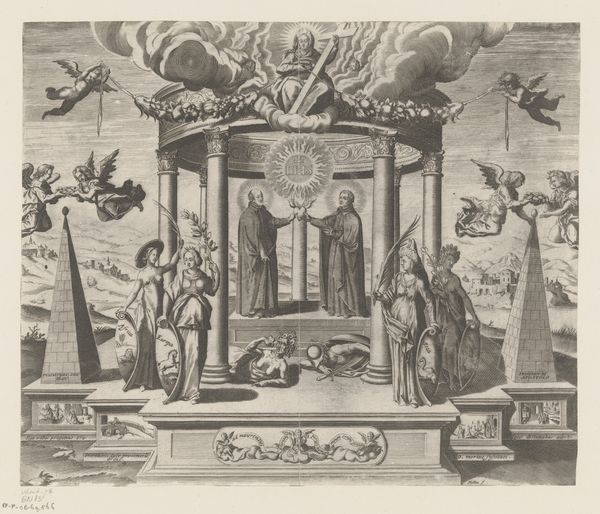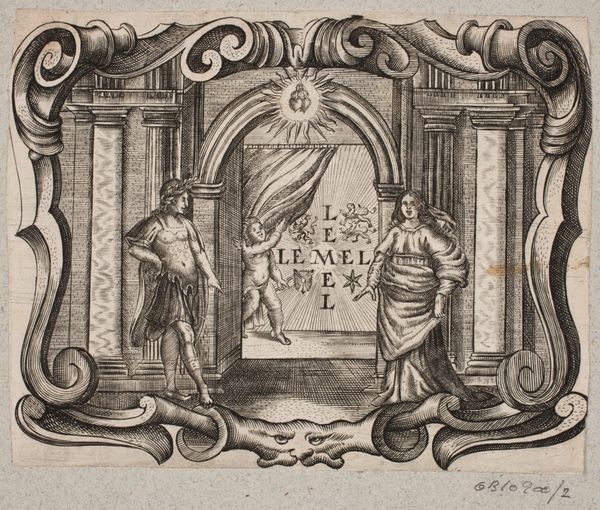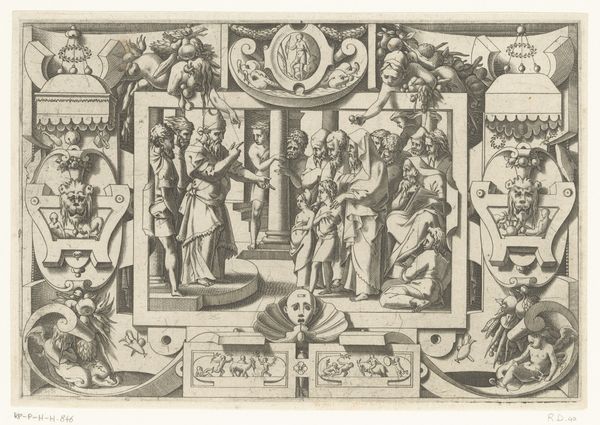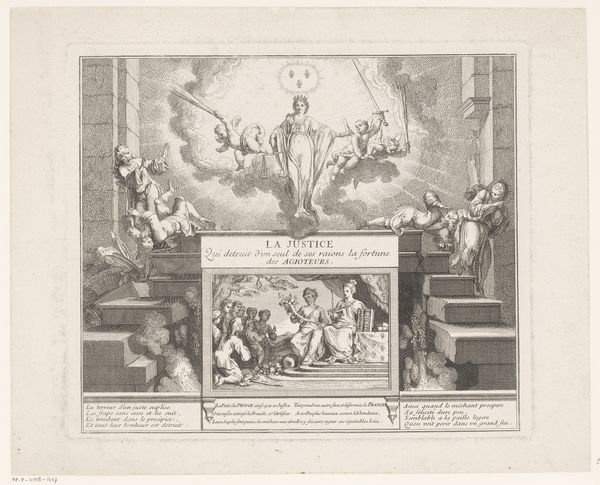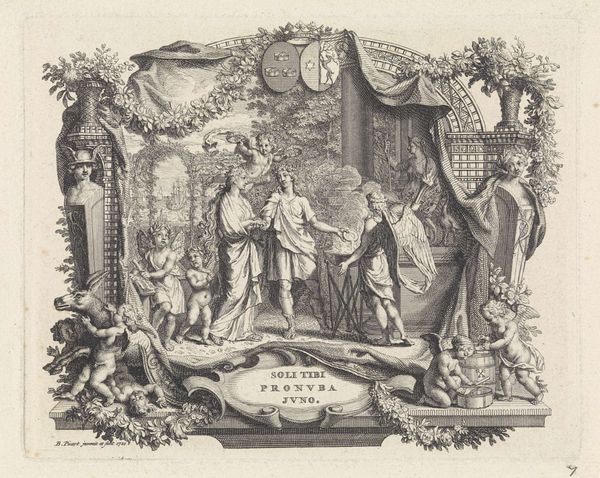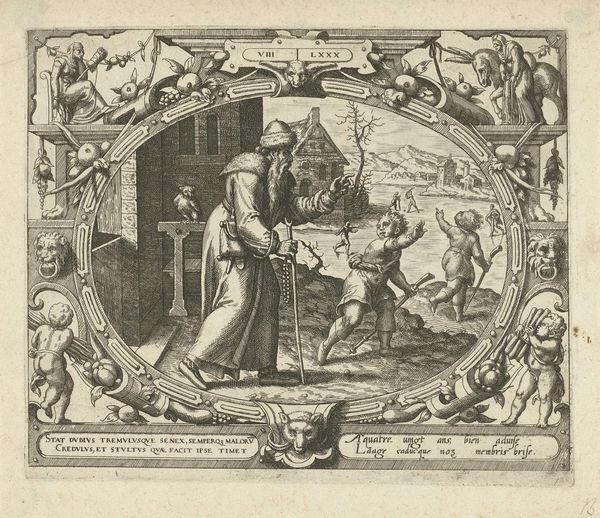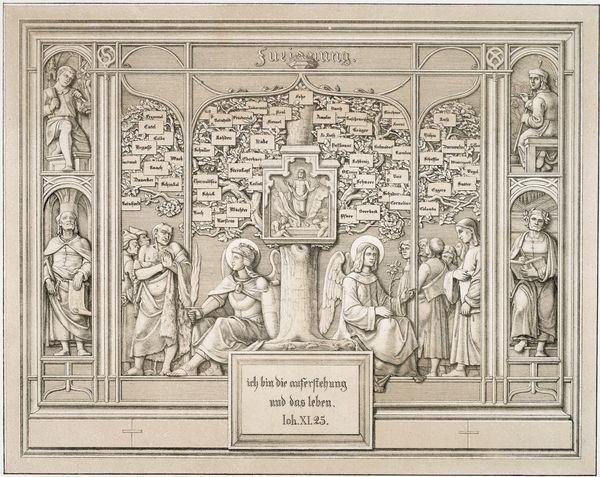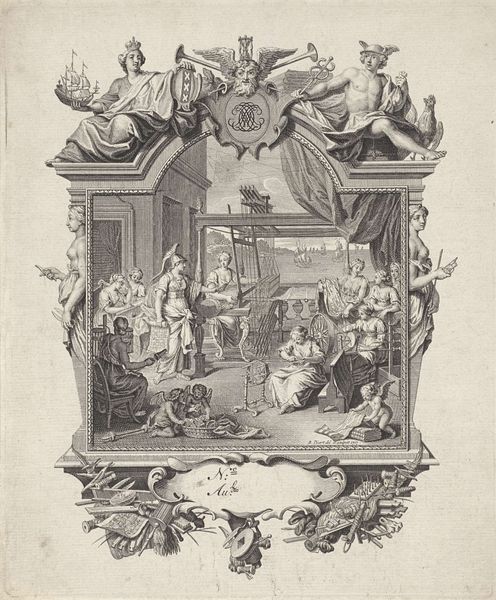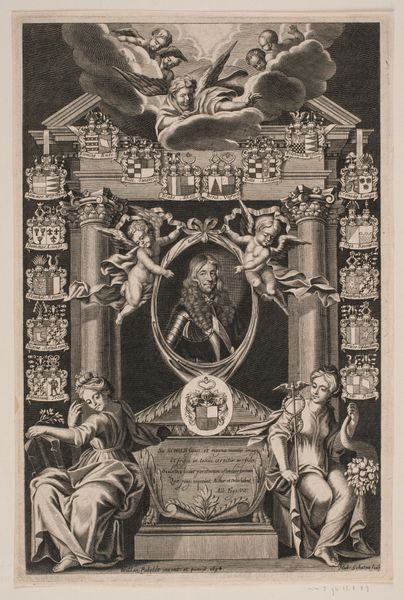
print, engraving
# print
#
figuration
#
line
#
history-painting
#
northern-renaissance
#
engraving
Dimensions: height 230 mm, width 302 mm
Copyright: Rijks Museum: Open Domain
Curator: This engraving, currently held at the Rijksmuseum, is entitled "Annunciation, Surrounded by Prophets." It was created sometime between 1547 and 1591 by Gerard de Jode. Editor: My goodness, the detail is striking! The composition, however, feels a bit overwhelming at first glance with so much crammed in—almost as if it's meant to be read rather than simply viewed. Curator: Precisely. The density speaks volumes about the social and cultural context of the time. Prints like these functioned as readily reproducible forms of knowledge, disseminating religious narratives and interpretations to a wide audience. It’s all about accessibility. Editor: So, less about aesthetic innovation, and more about... information distribution? I suppose the medium – this very precise line engraving – reflects that. All these lines; I can't even imagine the physical labor behind such an intricate design! How did the conditions of artistic production during the Northern Renaissance inform the kind of work that got made? Curator: Think about it this way: The very act of replicating images, particularly religious ones, became a significant industry. Workshops popped up; printmakers weren’t necessarily lauded as individual geniuses. Instead, their craftsmanship fed the demand of rapidly changing religious landscapes of 16th-century Europe. Editor: I see. Looking closer, it's fascinating how de Jode intertwines the heavenly and earthly realms. We have the prophets, with their scrolls – text again! – framing the Annunciation. Curator: Indeed. This piece speaks volumes about how sacred stories are negotiated and reinterpreted in print media, shaping the faith for many. What do you make of the material reality presented by de Jode? Editor: I wonder about the value associated with these prints at the time? Who would buy such a piece and what might they do with it? Did the act of repeated handling change how these images were viewed in a domestic space? I'm certain they functioned almost like wallpaper in some places, considering the output! Curator: These prints certainly weren’t just aesthetic objects. They played an active part in shaping religious experience. Editor: Well, this has certainly changed how I perceive this image – the intersection of material creation, religious dissemination, and, ultimately, the construction of faith. Thanks for shedding light on it! Curator: And thank you for prompting such thoughtful observations about process and production; it’s essential we remember how integral those are to this artwork’s meaning.
Comments
No comments
Be the first to comment and join the conversation on the ultimate creative platform.
